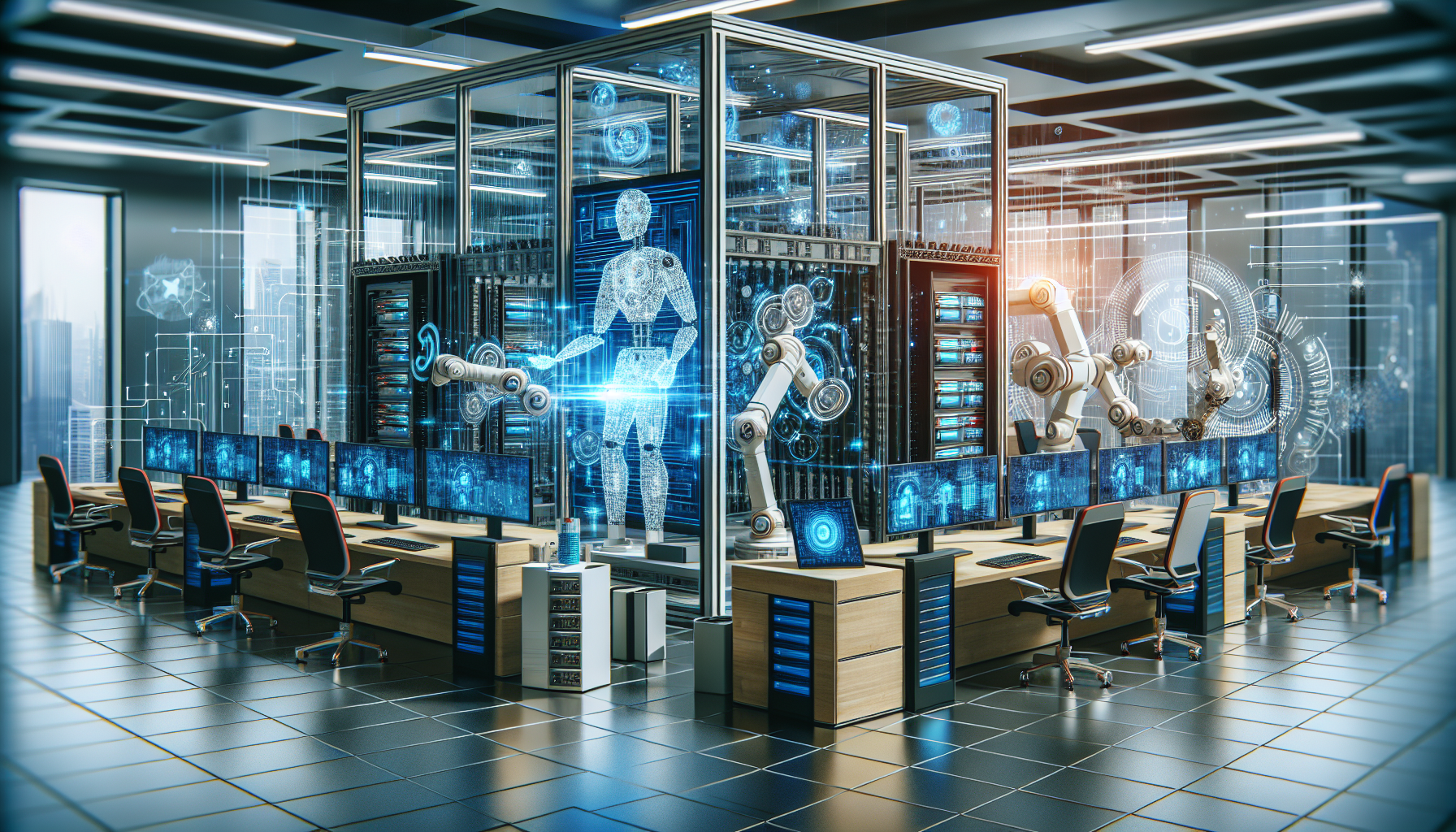AI and Automation: A New Era in Business Efficiency
The integration of artificial intelligence (AI) and automation into business practices marks a transformative shift in how organizations operate, manage resources, and interact with customers. By leveraging advanced technologies, businesses are redefining their operational frameworks, enhancing efficiency, and positioning themselves at the forefront of innovation. This article explores the paradigm change driven by AI and automation, their implications for various industries, and the future landscape of business efficiency.
Understanding AI and Automation
AI refers to the simulation of human intelligence in machines programmed to think and learn. It encompasses various technologies, including machine learning, natural language processing, and computer vision. Automation, on the other hand, involves using technology to perform tasks without human intervention. When paired, AI and automation create systems that can not only execute routine tasks but also improve and adapt based on data.
Increased Efficiency Through AI and Automation
One of the most significant advantages of AI and automation is the dramatic increase in efficiency they bring to business processes. Traditional methods often rely on human labor, which can be slow and prone to errors. AI-driven automation helps streamline operations by enabling machines to perform repetitive tasks with precision. For example, in manufacturing, robotic arms can assemble products at a speed and accuracy that far exceeds human capabilities.
Cost Reduction and Resource Management
Implementing AI and automation can lead to substantial cost savings. By reducing reliance on human capital for repetitive tasks, companies can reallocate resources toward more strategic initiatives. This not only mitigates labor costs but also allows organizations to take on complex projects that were previously unattainable due to manpower limitations. Companies like Amazon have demonstrated how automation in warehousing can reduce operational costs while increasing output.
Enhanced Customer Experience
AI and automation also play a crucial role in improving customer experience. Advanced algorithms can analyze customer data to provide personalized recommendations, enhancing user engagement. For example, Netflix employs machine learning algorithms to suggest shows based on viewing history, significantly increasing viewer retention. Additionally, chatbots, powered by AI, provide 24/7 customer support, allowing businesses to address customer queries promptly and efficiently.
Industry Applications of AI and Automation
-
Healthcare: The healthcare sector is witnessing a notable transformation through AI-driven diagnostics and treatment recommendations. Machine learning algorithms can analyze medical data to identify diseases earlier and with more accuracy than human practitioners. Moreover, robotic surgeries and automation in hospitals streamline operations, thus improving patient outcomes.
-
Finance: In finance, AI and automation have revolutionized risk assessment and fraud detection. Algorithms can analyze vast datasets in real-time, identifying anomalies that may indicate fraudulent activity. Additionally, automated trading systems use AI to make informed investment decisions faster than human traders.
-
Retail: The retail industry benefits from AI through demand forecasting and inventory management. Predictive analytics allow retailers to stock products that are more likely to sell, reducing excess inventory and associated costs. Automated supply chain management systems ensure timely replenishment of stock, enhancing customer satisfaction.
-
Supply Chain Management: AI can optimize supply chain logistics through predictive modeling. By analyzing patterns in data, companies can anticipate demand fluctuations, adjust supply accordingly, and minimize waste. Automation further streamlines processes, ensuring seamless operations from production to delivery.
-
Marketing: AI-driven tools enable businesses to hyper-target marketing initiatives. By analyzing consumer behavior and preferences, companies can create personalized marketing strategies that yield higher conversion rates. Automation allows marketers to execute campaign strategies at scale, ensuring consistent messaging across channels.
Challenges and Considerations
Despite the numerous advantages, integrating AI and automation into business operations presents challenges. Concerns about job displacement are prominent as machines take over tasks previously handled by humans. Organizations must focus on reskilling employees to adapt to new roles that emerge alongside technological advancements.
Moreover, data privacy issues pose significant challenges. As businesses gather and utilize vast amounts of sensitive information, adhering to regulatory standards is paramount. Companies must implement robust data security measures to protect customer information and maintain trust.
Future Trends in AI and Automation
The future of AI and automation in business efficiency is promising, characterized by ongoing advancements and novel applications. Increased collaboration between human intelligence and AI is likely to define the next decade, where humans focus on strategic decision-making while machines handle data-driven tasks.
Furthermore, the development of explainable AI (XAI) will enhance transparency in automated decisions, allowing organizations to trust and understand AI outputs better. The proliferation of Internet of Things (IoT) devices will also create a wealth of data for machine learning algorithms, driving continual innovation in automation processes.
Measuring the Impact of AI and Automation
To fully understand the impact of AI and automation, businesses should establish metrics to evaluate performance improvements over time. Key performance indicators (KPIs) may include throughput rates, error rates, customer satisfaction scores, and employee engagement metrics. Regular assessments will help organizations gauge the success of their automation initiatives, allowing for adjustments in strategy.
Adoption Strategies for Businesses
For organizations looking to adopt AI and automation, a phased approach is advisable. Initial steps should involve identifying areas where automation can yield the most significant benefits and developing a clear implementation roadmap. Engaging employees throughout the process ensures buy-in and alleviates concerns about job security.
Investing in training programs for employees is crucial in equipping them with the necessary skills to work alongside AI technologies. Collaborative efforts, rather than resistance to change, will drive the successful integration of these advanced systems.
Conclusion
AI and automation are not just trends; they signify a fundamental shift in business operations, offering organizations unparalleled opportunities to enhance efficiency, reduce costs, and elevate customer experiences. As technology continues to evolve, businesses that embrace these innovations will find themselves better positioned to thrive in an increasingly competitive landscape.


